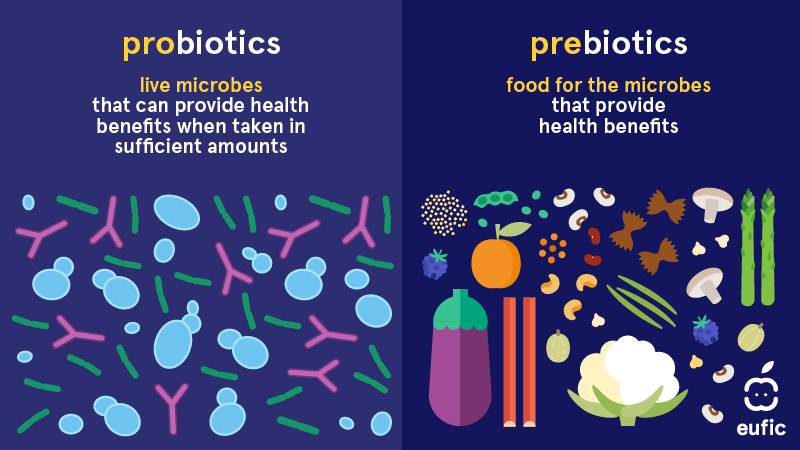128 Prebiotic vs. Probiotic: Do They Work?
kuhl0149; ruesc020; and lunde550
Learning Objectives
- Demonstrate knowledge of gastrointestinal anatomy
- Compare and contrast microbiota in the gut
- Explain the differences between prebiotics and probiotics
- Explain what prebiotics and probiotics can do for the body
Review of the Gastrointestinal Tract
The GI tract consists of the mouth, esophagus, stomach, small intestine, large intestine, rectum and anus. There are also parts of the digestive system that are not in the tract. These are the pancreas, liver, gallbladder and salivary gland
Mouth and Esophagus:
The mouth is the beginning of the GI tract and is mainly involved in prehension (grabbing of food), mechanical break down of food, and swallowing. The mouth also contains salivary glands which produce saliva containing amylase to begin breaking down starches. The esophagus is a muscular tube that helps move food and liquid from the mouth to the stomach. The contractions of the muscle of the esophagus is called peristalsis.
Stomach:
The main functions of the stomach are to make digestive juices that help to break down food. The stomach is also be used to store food. The cells of the stomach produce mucus (to protect the lining of the stomach), hydrochloric acid and pepsin (an enzyme that digests protein).
Small Intestine:
The small intestine is the main location of nutrient absorption. It is made up of three regions; the duodenum, jejunum, and ileum. The pancreas and gall bladder connect to the duodenum and release digestive enzymes and bile respectively.
Large Intestine:
The large intestine is the section of the GI tract responsible for water absorption. This region has many bacteria that play an important part in maintaining normal bodily functions.
Rectum and Anus:
The rectum is a small area at the end of the large intestine and connects to the anus. The anus is the end of the digestive tract where stool can leave the body.
Prebiotics vs. Probiotics
Prebiotics are the food for the gut microbiota. When prebiotics are ingested, they make their way to the intestines where they are fermented by the microbes there. The microbes need prebiotics to survive. Prebiotics can be found as supplements or can be naturally occurring in foods like onions, raw oats, and bananas. Prebiotics can be used to aid digestion and support the treatment of inflammatory bowel disease.
Probiotics are live microorganisms (bacteria and yeast) that live in the intestines. They help move food through the gut and work to boost immunity against infections. Probiotics can also be supplemented or found in foods like yogurt, aged cheese, and sauerkraut. Probiotics can be used to help treat diarrhea, intestinal infections, and reduce the severity of a cold or the flu.

Some people are into probiotics:
And some are not:
Activity
Working in group of 2-3, complete the following worksheets with one of the following articles:
NIH’s Probiotics: What You Need to Know
Smarter Review’s 5 Probiotics That Will Transform Your Gut Health in 2023
Note that you can do this exercise either on a printed handout found in the instructor guide, or on the following online documentation device.
Assessment

